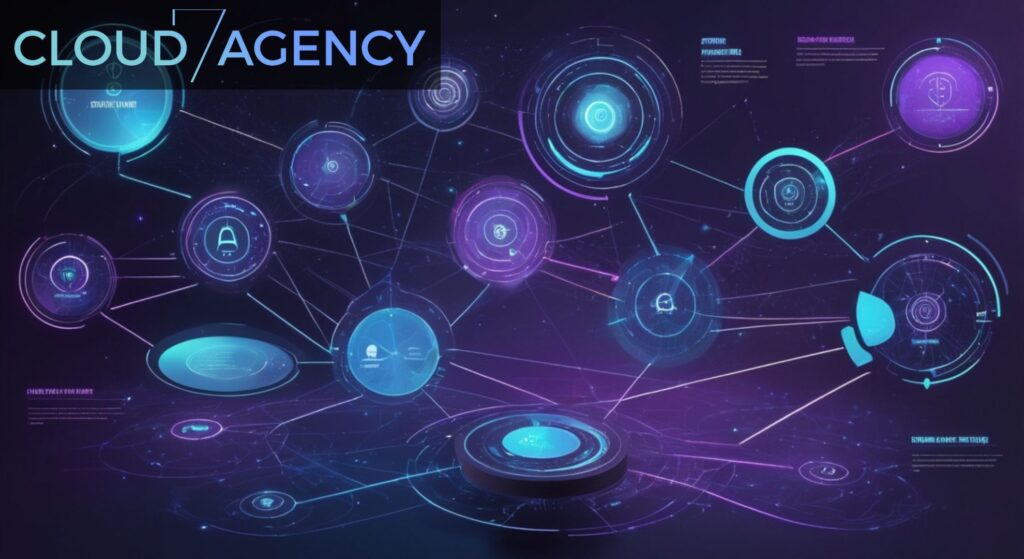The digital landscape has fundamentally transformed how customers interact with businesses, creating complex webs of touchpoints that span multiple channels and platforms. For local businesses striving to compete in today’s market, understanding these intricate customer pathways has become not just advantageous—it’s essential for survival. Traditional marketing approaches that relied on simple linear models of customer behavior are rapidly becoming obsolete, replaced by sophisticated AI-powered systems that can decode the nuanced reality of modern consumer decision-making.
Local businesses face unique challenges in this evolving environment. Unlike large corporations with extensive resources and dedicated analytics teams, smaller enterprises must maximize every marketing dollar while competing against both local competitors and national brands with significant digital presence. The solution lies in leveraging artificial intelligence to gain deeper insights into how customers discover, evaluate, and ultimately choose to purchase from local businesses.
Purchase path analysis represents a revolutionary approach to understanding customer behavior, moving beyond simple conversion tracking to examine the complete journey from initial awareness to final purchase and beyond. This comprehensive view reveals critical insights about customer preferences, pain points, and decision-making factors that traditional analytics often miss. When combined with AI-powered tools, businesses can identify patterns and opportunities that would be impossible to detect through manual analysis.
The integration of artificial intelligence into customer journey analysis has democratized access to enterprise-level insights, making sophisticated analytics available to businesses of all sizes. Machine learning algorithms can process vast amounts of data from multiple touchpoints, identifying subtle correlations and predicting future behavior with remarkable accuracy. This technological advancement enables local businesses to compete more effectively by understanding their customers at a granular level previously reserved for major corporations.
Customer journey mapping has evolved from static flowcharts to dynamic, data-driven visualizations that adapt in real-time as customer behavior changes. Modern AI systems can automatically adjust these maps based on new data, ensuring that businesses always have current insights into how their customers interact with their brand across all touchpoints. This dynamic approach is particularly valuable for local businesses, where customer relationships often involve more personal interactions and community-specific factors that influence purchasing decisions.
Key Takeaways
AI-powered analytics provide unprecedented visibility into customer behavior patterns, enabling local businesses to identify high-value touchpoints and optimize their marketing investments accordingly. These insights help businesses understand which channels drive the most qualified leads and which interactions are most likely to result in conversions.
Purchase path analysis reveals hidden conversion opportunities by mapping the complete customer journey from initial awareness through post-purchase engagement. This comprehensive view helps businesses identify where potential customers drop off and what factors influence their decision-making process.
Real-time customer journey mapping adapts to changing behavior patterns, ensuring that businesses stay current with evolving customer preferences and market conditions. This dynamic approach is particularly valuable in today’s rapidly changing business environment.
Integration across multiple data sources provides a holistic view of customer interactions, combining online and offline touchpoints to create comprehensive customer profiles. This unified approach helps businesses understand the full impact of their marketing efforts.
Predictive analytics capabilities enable businesses to anticipate customer needs and proactively address potential issues before they impact the customer experience. This forward-looking approach helps build stronger customer relationships and improve retention rates.
Automated optimization recommendations help businesses make data-driven decisions without requiring extensive technical expertise. AI systems can suggest specific actions to improve customer experience and increase conversion rates.
Cost-effective implementation makes enterprise-level analytics accessible to businesses of all sizes, leveling the playing field between local businesses and larger competitors with more resources.
Understanding AI-Powered Customer Journey Analysis
AI-powered customer journey analysis represents a fundamental shift from traditional marketing analytics, moving beyond simple metrics like page views and click-through rates to examine the complex interplay of factors that influence customer behavior. This sophisticated approach uses machine learning algorithms to process vast amounts of data from multiple sources, identifying patterns and correlations that human analysts might miss or take months to discover manually.

The foundation of effective AI-powered analysis lies in its ability to integrate data from diverse touchpoints, creating a unified view of each customer’s interaction with a business. This includes website visits, social media engagement, email interactions, phone calls, in-store visits, and even external factors like seasonal trends or local events that might influence purchasing decisions. By combining these data sources, AI systems can identify the true drivers of customer behavior and provide actionable insights for optimization.
Modern AI systems excel at recognizing subtle patterns in customer behavior that might indicate intent or predict future actions. For example, the system might identify that customers who visit certain product pages and then engage with specific social media content are significantly more likely to make a purchase within the next week. These insights enable businesses to create more targeted and effective marketing campaigns that reach customers at the optimal moment in their decision-making process.
The predictive capabilities of AI-powered analysis extend beyond simple behavior prediction to include sophisticated modeling of customer lifetime value, churn probability, and optimal engagement strategies. These models continuously learn and improve as they process more data, becoming increasingly accurate over time. This self-improving nature ensures that businesses always have access to the most current and relevant insights about their customers.
Implementing Purchase Path Analysis for Local Businesses
Purchase path analysis for local businesses requires a strategic approach that balances comprehensive data collection with practical implementation constraints. Unlike large enterprises with dedicated IT departments, local businesses must implement solutions that are both powerful and manageable with limited technical resources. The key is to start with a solid foundation and gradually expand capabilities as the business grows and becomes more comfortable with the technology.
The first step in implementing effective purchase path analysis involves identifying and mapping all customer touchpoints across the business. This includes obvious digital touchpoints like websites and social media, but also extends to less obvious interactions such as phone calls, email exchanges, and in-person conversations. Many local businesses are surprised to discover how many different ways customers interact with their brand throughout the purchasing process.
Data integration represents one of the most critical aspects of successful implementation. AI-powered systems must be able to connect customer interactions across all touchpoints to create accurate journey maps. This often requires implementing tracking systems that can follow customers as they move between online and offline channels. Modern solutions use techniques like customer matching algorithms and probabilistic modeling to connect interactions even when customers don’t provide explicit identifying information at every touchpoint.
The analysis phase involves using machine learning algorithms to identify patterns and trends in customer behavior. These systems can automatically segment customers based on their behavior patterns, identifying different types of customer journeys and the factors that influence each segment’s purchasing decisions. For local businesses, this might reveal that certain customer segments prefer to research online but purchase in-store, while others complete the entire transaction digitally.
Optimization based on purchase path analysis requires a systematic approach to testing and implementing changes. AI systems can recommend specific modifications to improve the customer experience and increase conversion rates. These might include adjusting website content, modifying email campaigns, or changing in-store processes based on insights gained from the analysis. The key is to implement changes gradually and measure their impact to ensure they produce the desired results.
IMAGE PROMPT: Local business owner reviewing customer journey analytics on tablet device, with physical store in background showing customers shopping, warm natural lighting, authentic business environment with data visualization overlays
Advanced Customer Journey Mapping Techniques
Advanced customer journey mapping goes far beyond traditional linear models to embrace the complex, multi-dimensional reality of modern customer behavior. Today’s customers rarely follow predictable paths from awareness to purchase; instead, they engage in dynamic, iterative processes that involve multiple research phases, comparison shopping, and various forms of validation before making final decisions. AI-powered mapping techniques can capture and analyze these complex patterns to provide businesses with actionable insights.

Multi-touch attribution modeling represents one of the most sophisticated aspects of advanced journey mapping. Traditional analytics often give credit for conversions to the last touchpoint before purchase, but this approach fails to recognize the important role played by earlier interactions in the customer journey. Advanced AI systems use algorithmic attribution models that assign appropriate credit to each touchpoint based on its actual influence on the final purchasing decision. This provides a more accurate picture of which marketing efforts are truly driving results.
Behavioral clustering and segmentation allow businesses to identify distinct groups of customers who follow similar journey patterns. AI algorithms can automatically group customers based on their behavior, preferences, and characteristics, revealing different customer personas that might require different marketing approaches. For local businesses, this might reveal segments such as “research-heavy buyers” who extensively investigate options before purchasing, or “impulse buyers” who make quick decisions based on immediate needs.
Real-time journey optimization represents the cutting edge of customer journey mapping, enabling businesses to adapt their approach based on current customer behavior. AI systems can monitor customer interactions in real-time and automatically adjust messaging, offers, or recommendations based on where the customer is in their journey and what actions they’ve taken recently. This dynamic approach ensures that customers always receive the most relevant and timely communications.
Cross-channel journey orchestration helps businesses create seamless experiences as customers move between different touchpoints. AI systems can coordinate messaging and experiences across email, social media, websites, and in-person interactions to ensure consistency and continuity. This is particularly important for local businesses where customers often interact through multiple channels before making purchasing decisions.
IMAGE PROMPT: Complex customer journey visualization with multiple branching paths and touchpoints, holographic-style data display showing interconnected customer segments, futuristic analytics dashboard, blue and purple color scheme, high-tech atmosphere
Measuring and Optimizing Customer Experience
Effective measurement of customer experience requires a comprehensive approach that goes beyond traditional metrics to capture the full spectrum of customer interactions and satisfaction levels. AI-powered measurement systems can automatically collect and analyze data from multiple sources, providing businesses with real-time insights into how customers perceive and interact with their brand throughout the entire journey.
Customer satisfaction scoring has evolved from simple surveys to sophisticated AI-driven analysis that can detect sentiment and satisfaction levels from various customer interactions. Natural language processing algorithms can analyze customer communications, reviews, and feedback to automatically generate satisfaction scores and identify specific areas for improvement. This automated approach provides more timely and comprehensive insights than traditional survey methods.
Experience quality metrics focus on measuring the effectiveness and efficiency of customer interactions at each touchpoint. AI systems can track metrics such as response times, resolution rates, and interaction quality to identify bottlenecks or problems in the customer journey. For local businesses, this might reveal that customers are having difficulty finding specific information on the website or that phone response times are too long during peak hours.
Predictive experience modeling uses historical data and machine learning algorithms to predict how changes to the customer experience will impact key business metrics. These models can help businesses understand the potential ROI of experience improvements before investing resources in implementation. This predictive capability is particularly valuable for local businesses with limited budgets who need to prioritize their improvement efforts carefully.
Continuous optimization processes ensure that customer experience improvements are ongoing rather than one-time initiatives. AI systems can automatically identify opportunities for improvement and recommend specific actions based on current performance data and industry best practices. This systematic approach to optimization helps businesses stay competitive and responsive to changing customer expectations.
Technology Integration and Implementation Strategies
Successful implementation of AI-powered customer journey analysis requires careful planning and strategic technology integration that aligns with business objectives and available resources. Local businesses must balance the desire for comprehensive analytics capabilities with practical considerations such as budget constraints, technical expertise, and implementation timelines. The key is to develop a phased approach that delivers immediate value while building toward more sophisticated capabilities over time.

Platform selection represents one of the most critical decisions in the implementation process. Modern AI analytics platforms offer varying levels of complexity and capability, from simple plug-and-play solutions to highly customizable enterprise systems. Local businesses should prioritize platforms that offer strong out-of-the-box functionality while providing room for growth and customization as their needs evolve. C7A specializes in helping businesses navigate these technology decisions to select solutions that provide optimal value and functionality.
Data infrastructure development involves establishing the systems and processes necessary to collect, store, and analyze customer data effectively. This includes implementing tracking systems, establishing data quality standards, and creating workflows for data analysis and action. Many local businesses underestimate the importance of solid data infrastructure, but it forms the foundation for all subsequent analytics efforts.
Integration with existing systems ensures that new AI-powered analytics capabilities work seamlessly with current business processes and technology stack. This might involve connecting with existing CRM systems, e-commerce platforms, or marketing automation tools to create a unified view of customer interactions. Proper integration eliminates data silos and ensures that insights from AI analysis can be easily acted upon across the organization.
Staff training and change management are essential components of successful implementation. Even the most sophisticated AI system will fail to deliver value if staff members don’t understand how to use the insights it provides. Businesses should invest in comprehensive training programs that help team members understand both the technical aspects of the system and the strategic implications of the insights it generates.
Performance monitoring and optimization ensure that AI systems continue to deliver value over time. This involves regularly reviewing system performance, updating algorithms based on new data, and adjusting strategies based on changing business conditions. Ongoing monitoring helps businesses maximize their return on investment in AI technology while staying ahead of evolving customer expectations and market conditions.
Frequently Asked Questions
What is the difference between traditional analytics and AI-powered customer journey analysis?
Traditional analytics typically focus on individual metrics and touchpoints, providing snapshots of customer behavior at specific moments. AI-powered customer journey analysis takes a holistic approach, connecting data from multiple touchpoints to create comprehensive views of customer behavior patterns and predicting future actions based on historical data and machine learning algorithms.
How long does it take to see results from implementing purchase path analysis?
Most businesses begin seeing initial insights within 2-4 weeks of implementation, with more comprehensive results emerging after 2-3 months as the AI system collects sufficient data to identify meaningful patterns. Full optimization typically occurs over 6-12 months as the system learns and refines its understanding of customer behavior.
What types of data are needed for effective customer journey mapping?
Effective mapping requires data from all customer touchpoints, including website interactions, social media engagement, email communications, phone calls, in-store visits, and purchase history. The more comprehensive the data collection, the more accurate and actionable the resulting insights will be.
Can small local businesses afford AI-powered analytics solutions?
Yes, modern AI analytics platforms offer scalable pricing models that make sophisticated analytics accessible to businesses of all sizes. Many solutions start at modest monthly fees and scale based on usage and features needed, allowing small businesses to access enterprise-level capabilities within their budget constraints.
How does AI-powered analysis handle customer privacy concerns?
Modern AI systems are designed with privacy protection as a core feature, using techniques like data anonymization, encryption, and compliance with regulations such as GDPR and CCPA. Businesses can gain valuable insights while maintaining customer privacy and building trust through transparent data practices.
What skills do staff members need to use AI-powered analytics effectively?
While technical expertise is helpful, most modern AI analytics platforms are designed for business users rather than technical specialists. Staff members primarily need strong analytical thinking skills and the ability to interpret data insights and translate them into actionable business strategies.
How often should customer journey maps be updated?
AI-powered systems automatically update journey maps in real-time as new data becomes available. However, businesses should conduct comprehensive reviews of their journey mapping strategy quarterly to ensure alignment with business objectives and market changes.
What ROI can businesses expect from implementing customer journey analysis?
ROI varies depending on implementation scope and business type, but most businesses see improvements in conversion rates of 15-30% and customer lifetime value increases of 20-40% within the first year. The specific return depends on how effectively businesses act on the insights generated by their analytics systems.
Conclusion
The transformation of customer journey analysis through artificial intelligence represents more than just a technological advancement—it’s a fundamental shift in how businesses understand and serve their customers. For local businesses competing in increasingly complex markets, AI-powered purchase path analysis and customer journey mapping provide essential tools for survival and growth. These technologies democratize access to sophisticated insights that were once available only to large corporations with extensive resources.
The implementation of AI-powered customer journey analysis requires commitment and strategic thinking, but the rewards justify the investment. Businesses that embrace these technologies gain competitive advantages through deeper customer understanding, more effective marketing strategies, and improved customer experiences. The ability to predict customer behavior, identify optimization opportunities, and adapt to changing market conditions in real-time provides sustainable competitive advantages that compound over time.
As customer expectations continue to evolve and competition intensifies, the businesses that thrive will be those that best understand their customers’ needs and preferences. AI-powered analytics provide the insights necessary to meet these challenges while building stronger, more profitable customer relationships. The future belongs to businesses that can effectively leverage these technologies to create exceptional customer experiences and drive sustainable growth.
C7A stands ready to help local businesses navigate this transformation, providing expertise and support to implement AI-powered customer journey analysis solutions that deliver measurable results. The opportunity to revolutionize customer understanding and business performance has never been more accessible or more critical to long-term success.

